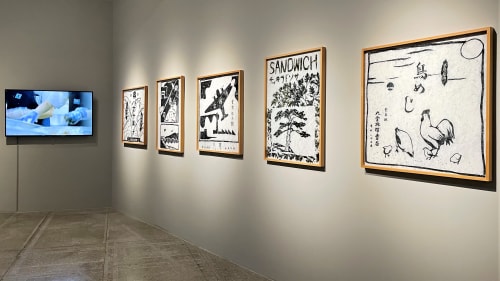Since James Watt's improved steam engine led the Industrial Revolution in 1769, it has brought explosive development to human life, and human labor has gradually turned to mechanical labor, which has brought about tremendous changes in society. As a high-tech industrial center in Taiwan, Hsinchu has a large number of precision technology foundry and R&D manufacturing plants, which also depict the local economic activities. It can be said that the rise of science parks is the best synonym for collective manufacturing. With the rise of globalization, AI/Internet of Things, and digital technology, countless manufactured objects have shaped our daily lives. So far, you and I are all living under collective manufacturing, and our life and labor have also participated and become collectives. Part of manufacturing. This exhibition invites five contemporary artists who are good at using different media to participate in their creation, concepts and actions. Through multiple perspectives and interpretations, they respond to the various imaginations generated under this proposition, and try to guide the viewers to think about the advanced development of science and technology. And further seek solutions from this relationship.
The second floor of the museum is based on the collective consciousness of manpower and the reorganization and production of labor and information. The railway bento in Taiwan flourished with the track construction and tourism industry during the Japanese Occupation. At that time, the landscape of the terroir along the railway line was also delicately designed on the packaging drawing of the bento box-hanging paper (kakegami). The artist Hou I Ting’s photography and video work "White Uniform" is based on this historical background. It invites a group of workers in white uniforms in the kitchen of the seven Taiwanese iron bento to refer to the hanging paper of the railway bento 70 years ago and cut out the pattern with seaweed. Processed into a bento. Hou I Ting tried to turn the daily labor behaviors of the workers under the collective consciousness into artistic actions, so as to explore the relationship between artistic production and daily labor production; the video work "Cold Chain" quoted from the proper term of the logistics supply chain, starting from Hou I Ting visited Colombia’s transnational cut flower factory and carefully observed the production chain situation in the local workplace. She pointed out that under contemporary social governance, human beings follow the industrialized system and distribute , The interactive relationship between value exchange and information transmission.
Nowadays, in contemporary society, although human beings are deeply trapped in this inseparable circular pattern and structural organization, we are still able to look directly at the deficiencies of collective manufacturing through the eyes of the artist, and re-examine these things that are deeply rooted in life. It is not only a reaction to the "collective and universal", but also expects visitors to return to their own experience, to perceive individual operations in the collective, and to realize how individual labor corresponds to collective manufacturing.


